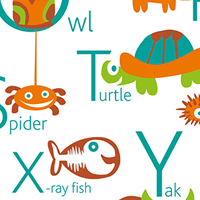Tổng hợp bài tập Tiếng Anh lớp 12 Unit 12 WATER SPORTS có đáp án
Tổng hợp bài tập Tiếng Anh lớp 12 Unit 12 WATER SPORTS có đáp án
Mời quý thầy cô, các em học sinh tham khảo Tổng hợp bài tập Tiếng Anh lớp 12 Unit 12 WATER SPORTS có đáp án được giới thiệu trên VnDoc.com. Những bài tập này sẽ giúp quý thầy cô có thêm tư liệu hay, hướng dẫn ôn tập cho học sinh của mình. Còn với các em học sinh, BST sẽ cung cấp cho các em nhiều dạng bài tập bổ trợ, giúp các em hệ thống lại kiến thức đơn vị bài vừa học.
Giải bài tập SGK tiếng Anh lớp 12 Unit 12 WATER SPORTS
Bài tập Tiếng Anh lớp 12 Unit 12 WATER SPORTS có đáp án (1)
Bài tập Tiếng Anh lớp 12 Unit 12 WATER SPORTS có đáp án (2)
Choose the word which is stressed differently from the rest.
1. a. water b. football c. begin d. meter
2. a. personal b. penalty c. defensive d. vertical
3. a. award b. prevent c. visit d. except
4. a. goalie b. advanced c. above d. depend
5. a. overtime b. decision c. period d. penalize
Choose a, b, c, or d that best completes each unfinished sentence, substitutes the underlined part, or has a close meaning to the original one.
6. Water polo is played in _______ pool 1. 8 meters deep.
a. a b. an c. the d. Ø
7. The goalie tried to catch _______ ball, but he failed.
a. a b. an c. the d. Ø
8. The final I _______ was 3-0.
a. score b. scoring c. scorer d. scores
9. The referee's _______ is the most important in any sport competition.
a. decide b. decisive c. decision d. decider
10. _______ players are not allowed to interfere with the opponent's movements unless the player is holding the ball.
a. Defense b. Defensive c. Defender d. Defensively
11. _____ the start of each period, both teams line up on their own goal line.
a. In b. For c. From d. At
12. A water polo ball is constructed of waterproof material to allow it to float _______ the water.
a. upon b. over c. above d. on
13. There are six field player positions and a goalkeeper ______ each team.
a. on b. with c. from d. for
14. _______ is a sport in which two or more people perform complicated and carefully planned movements in water in time to music.
a. Rowing b. Windsurfing c. Diving d. Synchronized swimming
15. If the tie is not broken after two overtime _______, a penalty shootout will determine the winner.
a. opponents b. waves c. parts d. periods
16. Minor _______ occur when a player impedes or otherwise prevents the free movement of an opponent including swimming on the opponent's shoulders, back or legs.
a. penalties b. shots c. fouls d. motions
17. _______ is a game played in a swimming pool in which two teams of swimmers try to score goals with a ball.
a. Water polo b. Rowing c. Swimming d. Water skiing
18. Offensive players may be called for a foul by pushing off a defender to provide space for a _______ or shot.
a. pass b. crossbar c. box d. goal
19. A penalty shot is _______ when a major foul is committed inside the 5-meter line.
a. prevented b. awarded c. committed d. ranged
20. A dry pass, meaning the ball does not _______ the water is thrown a few inches above the head of the catching player.
a. catch b. hold c. swim d. touch
Choose the sentence which has the closest meaning to the original one.
31. He could escape from hurt because he was wearing protective clothes.
a. Thanks to his protective clothes, he could escape from hurt.
b. His protective clothes made him hurt.
c. Due to his protective clothes, he was hurt.
d. His being hurt made his unable to wear protective clothes.
32. We were unable to type the contract because the computer malfunctioned.
a. Despite a computer malfunction, we managed to finish typing the contract.
b. The computer malfunction helped us complete the contract.
c. The fact that the computer malfunction prevented us from typing the contract.
d. Thanks to the computer malfunction, we could type the contract.
33. The roads were slippery because it snowed heavily.
a. It snowed too heavily to make the roads slippery.
b. The heavy snow prevented the roads from-being slippery.
c. Thanks to the slip of the roads, it snowed heavily.
d. The heavy snow made the roads slippery.
34. The accident happened because she was careless.
a. The accident was prevented due to her carelessness.
b. Her carelessness was responsible for the accident.
c. It was the accident that made her careless.
d. The more careless she was, the less accident happened.
35. I did not understand what the lecturer was saying because I had not read his book.
a. What the lecturer wrote and said was too difficult for me to understand.
b. The lecturer's book which I had not read was difficult to understand.
c. I found it very difficult to understand what the lecturer said in his book.
d. I would have understood what the lecturer was saying if I had read his book.
Bài tập Tiếng Anh lớp 12 Unit 12 WATER SPORTS có đáp án (3)
Choose a, b, c, or d that best completes each unfinished sentence, substitutes the underlined part, or has a close meaning to the original one.
6. Where can people play _______ water polo?
a. a b. an c. the d. Ø
7. No _______ water polo player except _______ goalie can hold the ball with both hands.
a. a/ the b. the/ Ø c. the/ a d. Ø/ the
8. The main task of a defender in a sport game is to _______ the opponents from scoring.
a. prevent b. preventing c. prevention d. preventable
9. Many young men prefer scuba-diving because it is _______.
a. adventure b. adventurous c. adventurously d. adventurist
10. I _______ think that scuba diving is more of danger than adventure.
a. person b. personal c. personally d. personalize
11. What kind of sport one chooses to play mostly depends _______ his preference and health.
a. with b. for c. in d. on
12. Most referees often wears _______ black.
a. in b. for c. with d. on
13. In water polo game, only the goalie can hold the ball _______ two hands.
a. at b. in c. with d. from
14. If the score is tied at the end of regulation play, two _______ periods of three minutes each are played.
a. half b. halftime c. quarter d. overtime
15. A water polo cap is used to ____ the players' heads and to identify them.
a. tie b. penalize c. protect d. move
16. lf a defender _______ with a free throw, holds or sinks an attacker, he is excluded from the game for twenty seconds.
a. punches b. passes c. plays d. interferes
17. Water polo is a team water game, with six field players and one goalie in each team. The winner of the game is the team that scores more _____.
a. nets b. goals c. plays d. balls
18. As all field players are only allowed to touch the ball with one hand at a time, they must develop the ability to catch and _______ the ball with either hand.
a. throw b. point c. score d. cross
19. _______ is the activity of swimming underwater using special breathing equipment.
a. Synchronized swimming b. Rowing
c. Water polo d. Scuba diving
20. When the offense takes possession of the ball, the strategy is to _______ the ball down the field of play and to score a goal.
a. create b. ride c. advance d. eject
Choose the best that can completes the following.
31. _______, consisting of swimmers performing a synchronized routine of elaborate and dramatic moves in the water, accompanied by music.
a. Synchronized swimming is a hybrid of swimming, gymnastics, and dance
b. Synchronized swimming which a water sport, a hybrid of swimming, gymnastics, and dance
c. Synchronized swimming, a hybrid of swimming, gymnastics, and dance
d. Synchronized swimming, it is a hybrid of swimming, gymnastics, and dance.
32. Synchronized swimming demands some water skills, and requires incredible strength, endurance, flexibility, grace, artistry and precise timing, _______.
a. while upside down underwater with exceptional breath control
b. because of exceptional breath control while upside down underwater
c. also exceptional breath control is required while upside down underwater
d. as well as exceptional breath control while upside down underwater
33. Developed in the early 1900s in Canada, synchronized swimming is a sport performed almost exclusively by women. _______.
a. As for its early form, sometimes it was called "water ballet"
b. In its early form, it was sometimes known as "water ballet"
c. Since its early form, sometimes it knew as "water ballet"
d. With its early form, "water ballet" was sometimes known
34. When performing routines, competitors will typically wear a nose-clip. _______, to reflect the type of music to which they are swimming.
a. The competitors who wear custom swimsuits and headpieces, usually elaborately decorated
b. They also wear custom swimsuits and headpieces, usually elaborately decorated
c. They also wear custom swimsuits and headpieces, which are usually elaborately decorating.
d. Usually elaborately decorated, the competitors also wear custom swimsuits and headpieces
35. In synchronized swimming, the costume and music are not judged directly, _______. Underwater speakers ensure that swimmers can hear the music at all times.
a. with factors into the overall performance and "artistic impression"
b. as a result they are factors into the overall performance and "artistic impression"
c. but they are factors into the overall performance and "artistic impression"
d. because they are factors into the overall performance as well as "artistic impression"
Read the passage carefully and choose the correct answer.
Recreational diving or sport diving is a type of diving that uses scuba equipment for the purpose of leisure and enjoyment. In some diving circles, the term "recreational diving" is used in contradistinction to "technical diving", a more demanding aspect of the sport which requires greater levels of training, experience and equipment.
Recreational scuba diving grew out of related activities such as snorkeling and underwater hunting. For a long time, recreational underwater excursions were limited by the amount of breath that could be held. However, the invention of the aqualung in 1943 by Jacques-Yves Cousteau and its development over subsequent years led to a revolution in recreational diving. However, for much of the 1950s and early1960s, recreational scuba diving was a sport limited to those who were able to afford or make their own kit, and prepared to undergo intensive training to use it. As the sport became more popular, manufacturers became aware of the potential market, and equipment began to appear that was easy to use, affordable and reliable. Continued advances in' SCUBA technology, such as buoyancy compensators, modern diving regulators, wet or dry suits, and dive computers, increased the safety, comfort and convenience of the gear encouraging more people to train and use it.
Until the early 1950s, navies and other organizations performing professional diving were the only providers of diver training, but only for their own personnel and only using their own types of equipment. There were no training courses available to civilians who bought the first scuba equipment. Professional instruction started in 1959 when the non-profit National Association of Underwater Instructors was formed.
Further developments in technology have reduced the cost of training and diving. Scuba-diving has become a popular leisure activity, and many diving locations have some form of dive shop presence that can offer air fills, equipment and training. In tropical and sub-tropical parts of the world, there is a large market in holiday divers, who train and dive while on holiday, but rarely dive close to home. Generally, recreational diving depths are limited to a maximum of between 30 and 40 meters (100 and 130 feet), beyond which a variety of safety issues make it unsafe to dive using recreation diving equipment and practices, and specialized training and equipment for technical diving are needed.
36. Recreational diving _______.
a. requires more equipment than technical diving,
b. are taken up by many people for leisure and entertainment
c. needs no equipment
d. requires more experience than technical diving
37. Recreational underwater excursions used to be limited _______.
a. as underwater hunting was banned
b. because the necessary amount of breath was too expensive to afford
c. because divers could not take enough amount of breath with them
d. because the necessary amount of breath was too heavy to bring
38. According to the second paragraph, in the 1950s and early 1960s, recreational scuba diving was a sport limited because _______.
a. divers did not like to take part in any intensive training courses
b. there were not any intensive training courses for divers
c. there were not enough kit for many divers
d. kit and intensive training were too expensive for many people to afford
39. These following sentences are true EXCEPT _______.
a. In the early 1950s anyone who wanted to dive could be professionally trained.
b. In the early 1950s there were no training courses available to civilians who bought the first scuba equipment.
c. As recreational diving became more popular, manufacturers have made more and more diving equipment.
d. Advances in scuba technology encourage more and more people to train and use it.
40. Holiday divers _______.
a. do not like to dive in tropical and sub-tropical parts
b. can dive as deep as they like because of safety
c. are those who go away from home to dive
d. are limited in tropical and sub-tropical parts
Fill in each numbered blank with one suitable word or phrase.
Water polo is a rapidly growing sport in the United States and internationally as (41) ______. For anyone involved in playing or being a spectator, it is important to understand the rules of the game.
Each team (42) ______ of one goalie and six field players. Each field player plays both offense and defense, and the goalie is not allowed on the other half of the pool. There are many different arrangements of players in front of the goal. The (43) ______ of the players depends on the play that is being run, similar to basketball or hockey.
One important rule is that the ball can only be handled by one hand at a time. If a player (44) ______ the ball, which is the size of a volley ball, yellow and with rubber grip, with both hands, the referee calls a turnover and the possession of the ball goes to the opposing team.









